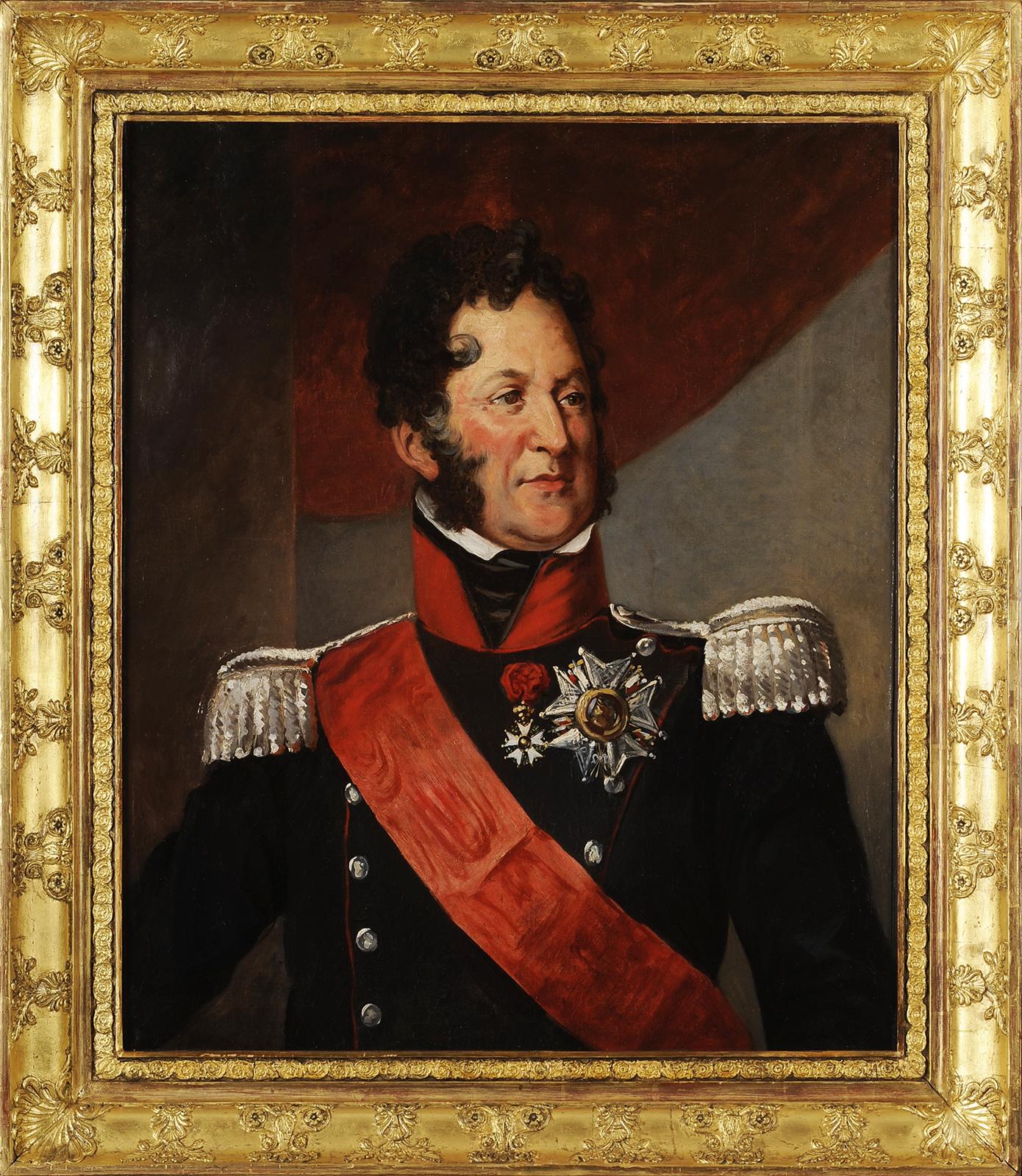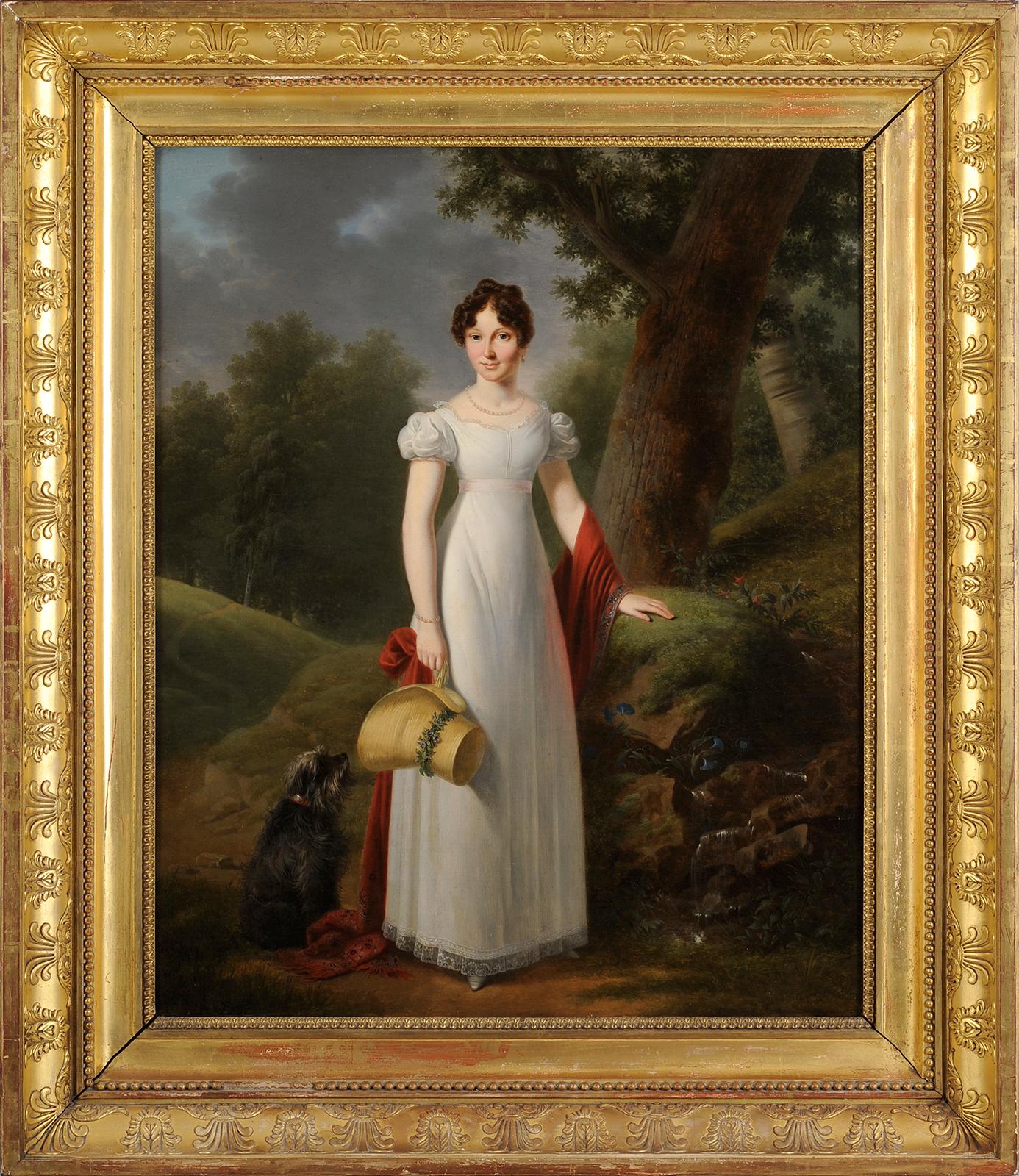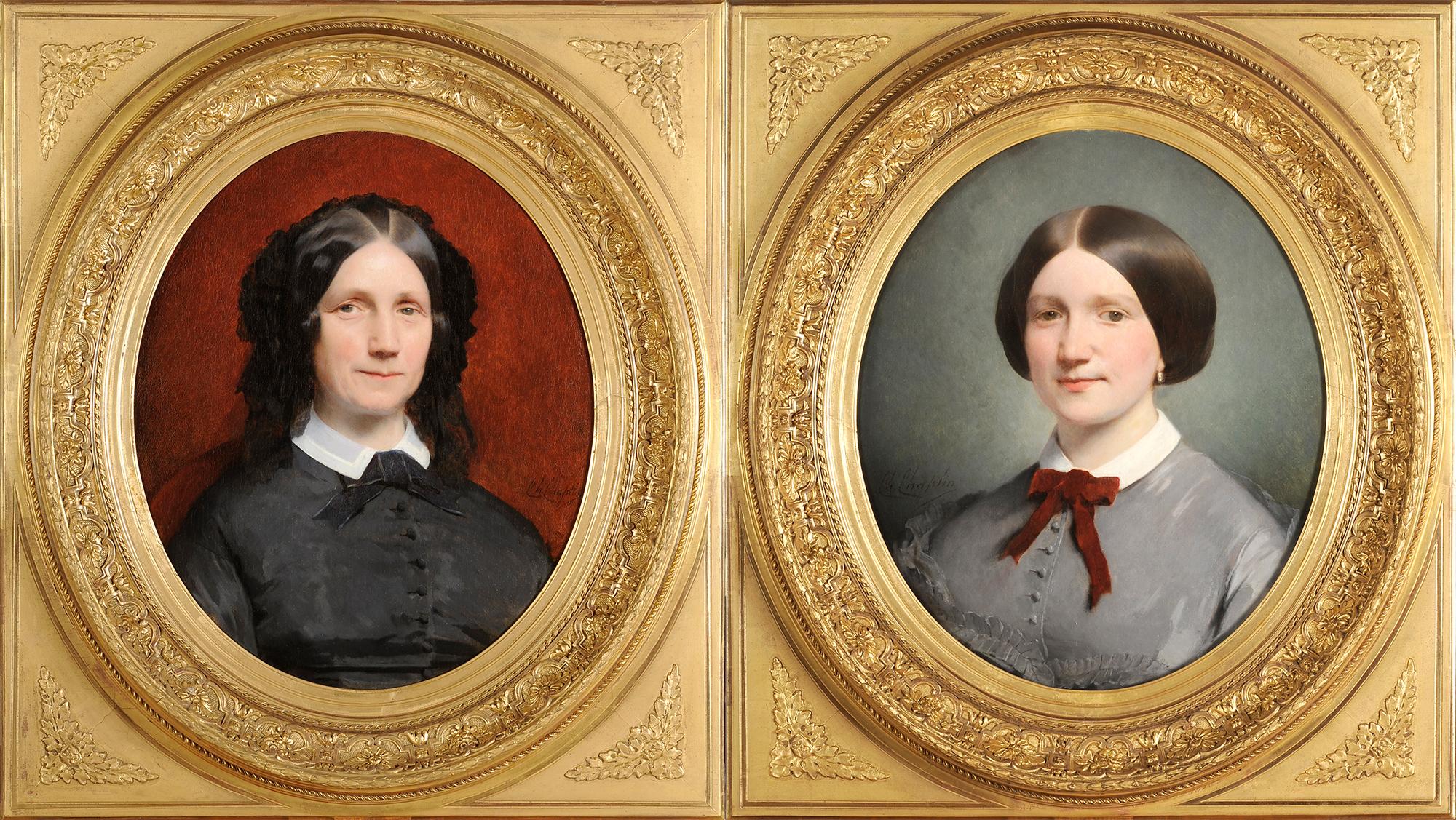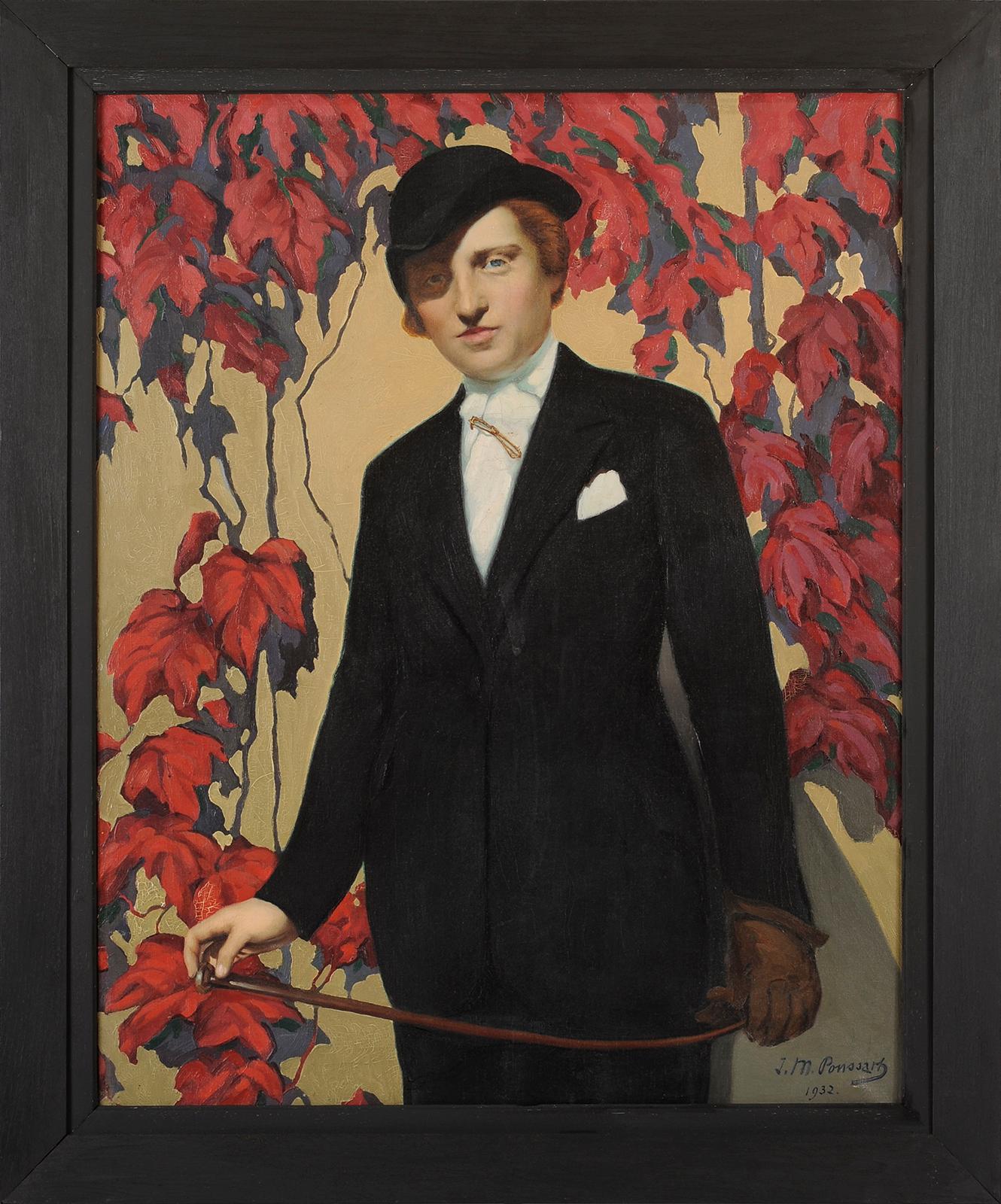Items Similar to Jules Naudin (1817-c.1876) - Tasso arriving at his sister's house in Sorrento
Want more images or videos?
Request additional images or videos from the seller
1 of 12
Attilio ManganaroJules Naudin (1817-c.1876) - Tasso arriving at his sister's house in Sorrento1851
1851
About the Item
Jules Ambroise Francois NAUDIN
(Paris 1817 – c.1876)
Tasso arriving at his sister's house in Sorrento
Oil on canvas
H. 49 cm; L. 37.5 cm
Signed lower right
Exhibition: 1852, Paris Salon, under number 959
Related work: Engraving by Jean-Denis Nargeot in 1852
Bibliography: L’Illustration, April 24, 1852, engraved by Best, Hottelin and Regnier, after a drawing by Valentin) and reproduced p.260, cited p.262; La Mode: Political, Religious and Literary Review, 1852, quoted; Journal des Demoiselles, 1852, engraved by Nargeot and reproduced; Almanac of literature, theater and fine arts, 1853, p.35, quoted.
A pupil of Léon Cogniet, Jules Naudin made his debut at the Paris Salon in 1838 and exhibited there until 1876, the supposed year of his death, mainly portraits and religious or historical subjects. In 1838 and 1841, he competed for the Grand Prix de Rome in painting at the School of Fine Arts and won a Second Grand Prix in 1841.
His wife Henriette Demours gives him a son born in 1853, Charles Edouard, who will move towards sculpture and architecture after training at the Beaux-Arts in Paris. Charles-Edouard bequeathed to the Louvre Museum a series of drawings by his father representing Italians in regional costumes, located on each sheet. This donation testifies to Naudin's travels in Italy and therefore to the stylistic reality of his compositions, of which our canvas is an example.
In 1852, a copy of the painting by David representing Bonaparte crossing the Grand-Saint-Bernard was commissioned from him for the Hospice de Mont Genèvre. A few years later, Christ who covers the poor and orphans with his mantle will be acquired by the State and placed in the Saint Front church in Ribérac (Dordogne), as will The Virgin with the Child Jesus who picks a branch of cypress, which will join the church of Luzarches (Val d'Oise) following the Salon of 1865. Two years later, the State buys him an Ecce Homo, then placed in the chapel of the high school of Clermont-Ferrand.
Our painting must have had some success at the Salon of 1852 since it was engraved twice and published in L'Illustration and the Journal des Demoiselles.
L’Illustration describes it as follows: “This little picture is fairly well composed, and can provide the subject of a pleasant engraving; but there is reason to reproach painting for the equality of the smooth touch and the uniformity of the tint, whatever the variety of the objects, flesh, fabrics or terrain.
The critical article on the 1852 Salon of L’Almanach de la Littérature, du Théâtre et des Beaux-Arts distinguishes our work, in the category of genre paintings, as one of those “having received the votes of the connoisseur public”.
Similarly, our painting stood out in the article on the Salon published in the July 5, 1852 issue of La Mode: political, religious and literary review: "We have cleared this inextricable mess of mediocrity from a painting by M. Jules Naudin, who has qualities…”, being part of “… those which seemed to us the most deserving of being pointed out to public scrutiny”.
Our work represents the moment when, in 1577, the famous Italian poet Torquato Tasso known as Le Tasse (born in Sorrento in 1544), while he was imprisoned in Ferrara by the Este family following an incident, escaped and comes to join his sister Cornélia living in Sorrento in November. Welcomed with kindness, he stayed with her for some time, but decided to go to Rome at the end of January 1578.
The incredible life of Tasso will be illustrated by many artists in the 19th century, between 1810 and 1870, in history painting in France, at a time when his work is experiencing a resurgence of interest: Menjaud, Franquelin, Fleury Richard, Dejuinne, Larivière, Clérian, Achille Deveria, Granet, Louis Gallait, Eugène Delacroix…
As for our subject in particular, it is treated for the first time by Louis Ducis in 1812 (the painting will be bought by the Empress Joséphine), within a cycle devoted to Tasso, then by Alfred de Curzon in 1859 (quoted above top) or even by Nicaise de Kayser (Cornilliet drew an engraving from it exhibited at the Salon of 1863).
The booklet of the Salon of 1812 captioned Ducis' painting thus: “On returning home, he announced himself as a messenger who brought her news of his brother. His sister did not recognize him; she opened the letter in which the unfortunate Torquato represented himself in the most cruel position. The tender Cornélia, on reading this frightful news, testified to such deep pain that Tasso could not bear his disguise and hastened to console her by throwing himself into her arms.
In 1859, Curzon's painting is described as follows: "Misled by his sickly imagination, he had fled from Ferrara. He arrives at his sister's, disguised as a shepherd and presents her with a letter in which he says he is in the greatest danger. From pain, Cornélie will faint. Tasso throws off his coat, makes himself known and holds her in his arms.
- Creator:Attilio Manganaro (1865 - 1890, Italian)
- Creation Year:1851
- Dimensions:Height: 19.3 in (49 cm)Width: 14.77 in (37.5 cm)
- Medium:
- Movement & Style:
- Period:
- Condition:Perfect condition. Cleaned.
- Gallery Location:BELEYMAS, FR
- Reference Number:1stDibs: LU186029879742
About the Seller
No Reviews Yet
Vetted Seller
These experienced sellers undergo a comprehensive evaluation by our team of in-house experts.
Established in 2011
1stDibs seller since 2022
- ShippingRetrieving quote...Ships From: BELEYMAS, France
- Return PolicyThis item cannot be returned.
More From This SellerView All
- French King Louis-Philippe - After Baron GérardLocated in BELEYMAS, FRAfter Baron Gérard, circa 1835 Portrait of King Louis-Philippe Oil on canvas H. 79 cm; L. 65 cm Provenance : Private collection, Périgord, by descent since the 19th century This po...Category
1830s French School Figurative Paintings
MaterialsCanvas, Oil
- François-Joseph Kinson - Young woman portrait with her dogBy Francois Kinsoen (Kinson)Located in BELEYMAS, FRFrançois-Joseph KINSON (Bruges 1770 – Bruges 1839) Portrait of a young woman near a spring, accompanied by her dog Oil on canvas H. 73 cm; L. 60 cm circa 1815-1817 We owe this elegant portrait to François-Joseph Kinson from Bruges, which is still linked to the art of the First Empire. We find in this artist this type of pose that is a bit rigid, sometimes with a countryside in the background, and this way of treating costumes and faces. Thus the full-length portrait of Jenny...Category
1810s French School Figurative Paintings
MaterialsCanvas, Oil
- French school c.1815 - Portrait of a young boyLocated in BELEYMAS, FRFrench school circa 1815 Portrait of a young boy Oil on canvas H. 84 cm; L. 70 cm Provenance: Señor Valdes Fauri Collection, Madrid around 1900/1950; then Private collection, Bordea...Category
1810s French School Figurative Paintings
MaterialsOil, Canvas
- Sketch of a dandy portraitLocated in BELEYMAS, FRFrench school circa 1840 Sketch of a dandy portrait Oil on canvas mounted on cardboard H. 21 cm; L. 20.5 cmCategory
1830s French School Figurative Paintings
MaterialsCanvas, Oil
- Pair of women portraitsBy Charles ChaplinLocated in BELEYMAS, FRCharles CHAPLIN (Les Andelys 1825 – Paris, 1891) Portraits of women Pair of oils on rectangular canvases H. 60 cm; L. 50 cm Signed Student of Michel Martin Drolling at the École des...Category
1850s French School Figurative Paintings
MaterialsCanvas, Oil
- Portrait of a woman in hunting in front of a vineyardLocated in BELEYMAS, FRJean-Marcel POUSSARD (1891-1972) Portrait of a woman in hunting attire in front of a vine H. 80 cm; L. 53 cm Oil on canvas Signed and dated lower right - 1932 Painter of portraits a...Category
1930s French School Figurative Paintings
MaterialsCanvas, Oil
You May Also Like
- SPRING BEAUTY - Angelo Granati - Oirtrair of Oil on Canvas PaintingBy Angelo GranatiLocated in Napoli, ITSPRING BEAUTY - Oil on canvas painting by Angelo Granati, Italy 2011 Gold leaf gilded, pleated silk and mirror wooden frame ext. mis. cm. 164x106. This is his reinterpretation of pa...Category
2010s French School Figurative Paintings
MaterialsCanvas, Oil
- MUSKETEERS - French School - Figurative - Italian Oil on Canvas PaintingBy Eugenio De BlasiLocated in Napoli, ITMusketeers - Oil on canvas cm.90x80, Italia, 2006, Eugenio De Blasi (3c59a) Eugenio De Blasi's painting is inspired by the neoclassical genre of the French painter Alex De Andreis who portrays his favorite subjects The Musketeers...Category
Early 2000s French School Portrait Paintings
MaterialsOil, Canvas
- Portrait of a child with blue eyesBy Charles Zacharie LandelleLocated in PARIS, FRCharles Zacharie LANDELLE (Laval, 1821 – Chennevières/Marne, 1908) Portrait of a child with blue eyes Oil on canvas Monogrammed and dated lower l...Category
Mid-19th Century French School Portrait Paintings
MaterialsOil
- Mignon regretting his homeland - Mignon aspiring to heavenLocated in PARIS, FRAry SCHEFFER (1795-1858), workshop of Mignon regretting his homeland Mignon aspiring to heaven Two oils on canvas in the same frame 44 x 22 cm each Mig...Category
Mid-19th Century French School Figurative Paintings
MaterialsOil
- Portrait of Jean Claude Pellegrini (1787-1854)Located in PARIS, FRFrançois Jean SABLET (Morges, 1745 – Nantes, 1819) Portrait of Jean Claude Pellegrini (1787-1854) Honorary Divisional Inspector of Bridges and Roads. Oil on canvas Monogrammed and dated lower right 30x25cm 1819 Painter of portraits, Jean François Sablet, originally from Morges, born November 23, 1745, is the eldest son of Jacob Sablet (1720–1798), bourgeois of this city, house painter, gilder, art dealer, and Suzanne Dupuis (1722–1775), settled in Lausanne from 1754. In 1767, on June 8, he prepared to leave to “improve in the art of painting” with a viaticum from the Council of Morges and a scholarship from Bern. In Paris, he was a pupil of Joseph-Marie Vien at the Royal Academy (1768–73). In 1772, he was joined by his younger brother Jacques, who in 1776 left for Rome to pursue a brilliant career there. François, he remains in Paris, goes almost unnoticed there having neither competed, nor received a prize, nor even exhibited. In 1774, he signed and dated the Portrait of the Count of Artois, as Colonel-General of the Swiss and Graubünden. In 1777, he married Marie Madeleine Borel, daughter of a wood merchant, and settled near the Quinze-Vingt at the Bastille, as a portrait painter. He entered the Masonic lodge of Celestial Friendship and therefore enjoyed a certain notoriety. He executed the portrait of Charles-Henri, Comte d'Estaing, engraved by Charles-Etienne Gaucher (1779). In 1781, L. Perrot reproduced two of his works from the cabinet of Madame de Saint-Maurice, Childhood in the Countryside and Visit to the Nurse, for the philanthropic society founded in particular by Louis d'Affry, captain of the Swiss Guards. . In addition to the fact that these subjects denote an ideal of benevolence under the aegis of Jean-Jacques Rousseau, they testify to relations with the Swiss milieu. Finally, the format and quality of two large full-length portraits Vestal pouring incense (1781) and the Offering to Hymen (1783) reflect her favor in society on the eve of the Revolution and, although in shadow, he is able to build life annuities. From this first stage are dated two sketchbooks in black chalk and red chalk of characters, interior scenes, theatrical evocations, including the Vestal Virgin pouring incense. He also signed a series of wash illustrations relating to mythology and other subjects taken from Ovid. In 1789, the political climate suddenly darkened, the amateurs left, dragging the artists with them. François Sablet took the road to Switzerland and, in January 1792, joined his brother in Rome, a genre painter in Italian costumes and portraits in nature called "conversation pieces", models from which François was to draw inspiration. François spent the summer in Genzano in the Roman countryside, where he also devoted himself to landscape and popular costumes. Beat d'Hennezel, their compatriot, evokes the evenings at the Sablets' with their artist friends, busy drawing portraits while exchanging heated remarks on the political situation. However, the events in Paris had repercussions in Rome. In January 1793 the French representative was assassinated, the French and other French speakers...Category
Early 19th Century French School Portrait Paintings
MaterialsOil
- CupidBy François Pascal Simon GérardLocated in PARIS, FRFrench School of the early 19th century Circle of Baron GERARD (1770-1835) or Circle of Élisabeth Louise VIGÉE-LEBRUN (Paris, 1755 – Paris, 1842) Cupid ...Category
Early 19th Century French School Portrait Paintings
MaterialsOil
Recently Viewed
View AllMore Ways To Browse
Brother Sister
Sister And Brothers
The Little Sisters
P 35
Buy Antique Art
1851 Exhibition
Italian School Engraving
1876 Portrait
Antique Letter C
Top Artists Oil C
Eugene C
Vote Paintings
Kayser Used
Mantle Painting
French 19th Century Architectural Drawings
Bonaparte Painting
Coat Of Arms Painting
Virgin Child Painting





